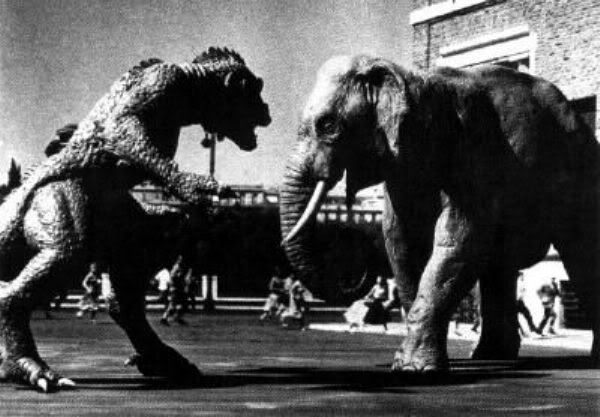Last summer, TCM started running a series of movies every Sunday evening that are more or less suitable for the entire family. The first batch of selections, under the title Funday Night at the Movies, included a few movies that are well-known to everybody, such as Bringing Up Baby and Mr. Smith Goes to Washington, and some that are based on stories that would be well-known to people who aren't fans of classic cinema, such as the 1934 version of Treasure Island and the 1949 version of Little Women. This summer, they're back, but called Essentials Jr.
Introducing classic cinema to those who don't know the subject too well, especially to children, is a good idea. The only problem lies in selecting the movies with which to do it. There are a lot of movies out there that are great for children; the only problem is that if you program them, a parent is going to look at the schedule, see something he or she has never heard of, with actors whose names don't ring a bell, and probably think "Why should I watch this?" Such is the case with an otherwise fun and child-friendly movie like Earthworm Tractors. TCM's pick this week, 20 Million Miles to Earth, almost fits the above description. Film buffs will probably recognize William Hopper, whose work never really rose above B movies. Well-read people who don't know much about movies might connect him to his mother, Hedda Hopper. Most of the rest of the names are even less-known. The saving grace, however, both in making it something parents are slightly more likely to know, and in actually watching, is the stop-motion photography of Ray Harryhausen.
TCM's pick this week, 20 Million Miles to Earth, almost fits the above description. Film buffs will probably recognize William Hopper, whose work never really rose above B movies. Well-read people who don't know much about movies might connect him to his mother, Hedda Hopper. Most of the rest of the names are even less-known. The saving grace, however, both in making it something parents are slightly more likely to know, and in actually watching, is the stop-motion photography of Ray Harryhausen.
There's not a whole lot to the plot of this movie: astronauts returning from the first manned trip to Venus make a crash landing off the coast of Italy; there's one really important piece of cargo they'd like to find, that being a Venusian creature called the Ymir. Unfortunately, what they don't know is that in the atmosphere of Planet Earth, the Ymir can grow to monstrous proportions. And having been taken from its native habitat, it's on a death wish. It breaks out of the cage that its finders put it in, and heads for Rome, where it wreaks havoc on the entire city while the authorities try to figure out how to stop it from rampaging. Godzilla, anybody? It's not original, but it's also not very frightening, which is one of the things that makes it suitable for children.
Unfortunately, what they don't know is that in the atmosphere of Planet Earth, the Ymir can grow to monstrous proportions. And having been taken from its native habitat, it's on a death wish. It breaks out of the cage that its finders put it in, and heads for Rome, where it wreaks havoc on the entire city while the authorities try to figure out how to stop it from rampaging. Godzilla, anybody? It's not original, but it's also not very frightening, which is one of the things that makes it suitable for children.
Of course, in the real world, the Ymir doesn't exist. In order to create it, the filmmakers turned to Harryhausen, who had been bit by the film bug when he first saw King Kong. Imagine trying to get the children of today to have the patience to do what Harryhausen did; posing his creatures for each individual shot, and then putting all those shots (24 of them per second of film) together. (No, that's not what William Wellman did in making Wings; stop-motion photography would have been too much of a problem for the pilots.) But then, tell children they didn't have personal computers back then. It's the dark ages to them -- and, I think, part of the reason why it's so difficult to get the next generation interested in classic movies.
20 Million Miles to Earth may be more suitable for younger children, who are less likely to be jaded by modern CGI. It's also suitable for us old farts, who just want to sit back and have fun.
Saturday, June 7, 2008
TCM's Essentials Jr.
Posted by
Ted S. (Just a Cineast)
at
3:55 PM
![]()
![]()
Subscribe to:
Post Comments (Atom)

No comments:
Post a Comment